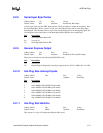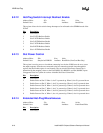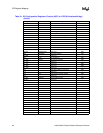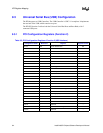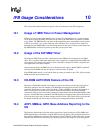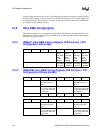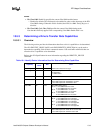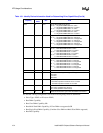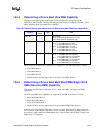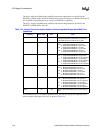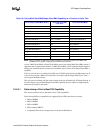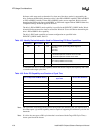
Intel® 460GX Chipset Software Developer’s Manual 10-1
IFB Usage Considerations 10
This section talks about the normal usage for some of the features in the IFB component.
10.1 Usage of 1MIN Timer in Power Management
IFB does not support the global standby timer concept. The determination of a system inactivity
can be done by using the 1MIN Timer that can be used by the SMI handler to generate an SMI#
every minute. The SMM handler can check all the appropriate power management status registers
in IFB to see if there is any system inactivity. After n minutes of no system activity (where n is
determined by the SMM handler, time based setup option for the user to indicate system inactivity),
the SMM handler can decide to put the system into a lower power state.
10.2 Usage of the SW SMI# Timer
The Software SMI# Timer provides a mechanism for the SMM code to temporarily exit SMM
space. This is required when some application code is required to complete before the SMM code
can complete. An example of this may be when a Soft-Off or Suspend-To-Disk is requested, and
some application code must complete.
After starting the timer, the SMM code exits. When the timer expires, another SMI# is generated.
At that point, the SMM code has the option to restart the timer, if needed.
If the SMM handler desires, it can halt the timer by setting its enable bit to 0. This will prevent the
SMI# generation at the next time-out.
10.3 CD-ROM AUTO RUN Feature of the OS
Whenever a CD-ROM controller is detected in a system, the OS may use the auto run feature if
enabled to indicate to the user whether a CD-ROM has been plugged-in into the CD-ROM
controller. The OS driver issues a Test Unit Ready (TUR) command to check for the insertion of
media. The firmware or the OS driver needs to ensure that the IRQ on which the CD-ROM
controller is being serviced is not being monitored with the help of the enabled Wake/Break enable
registers. Also the PM timers available in the IFB should be used appropriately before the firmware
goes to the low power state. All these changes need to be done if the system wishes to use the auto
run feature in the OS and still be able to use the power management features of the IFB.
10.4 ACPI, SMBus, GPIO Base Address Reporting to the
OS
The firmware should report all of the register space that is being used by the ACPI, SMBus and
GPIO functionalities to the OS by using the PNP device node entries. They should be declared as
Plug and Play motherboard resources with the Device ID of PNP0C02. If the ACPI tables are used
instead of the PNP Device node entries for reporting resources the change has to be incorporated



